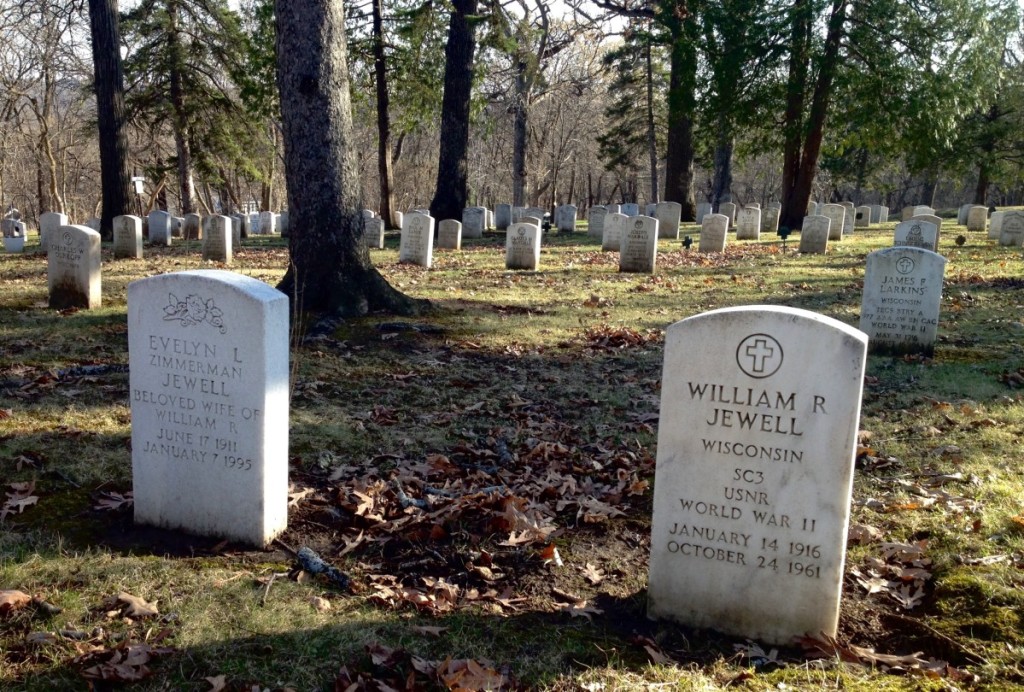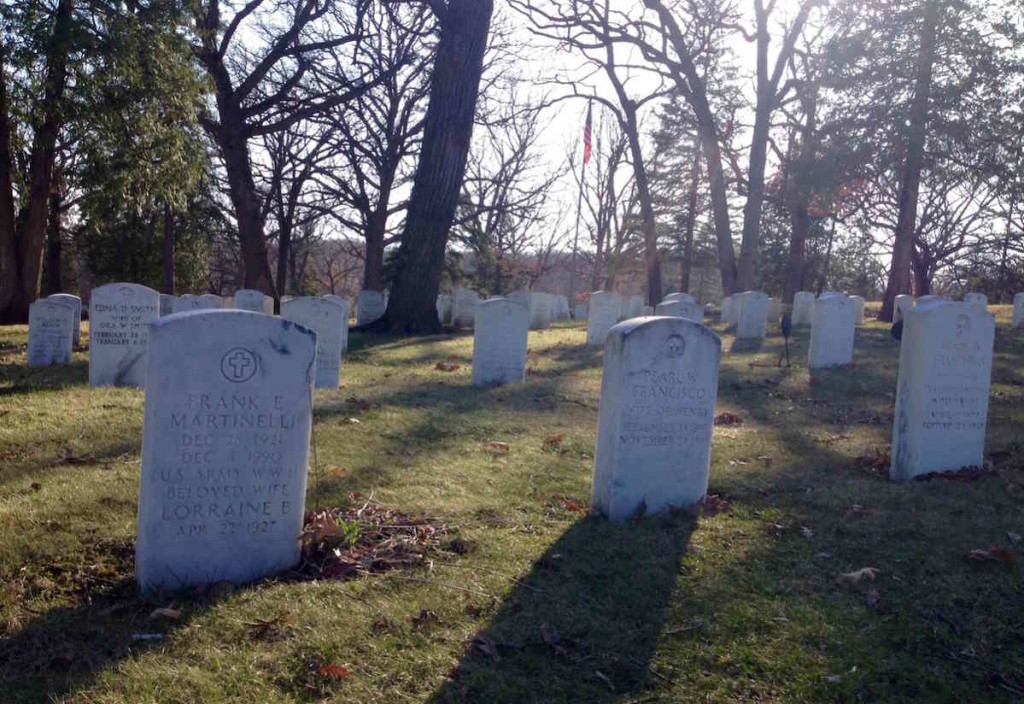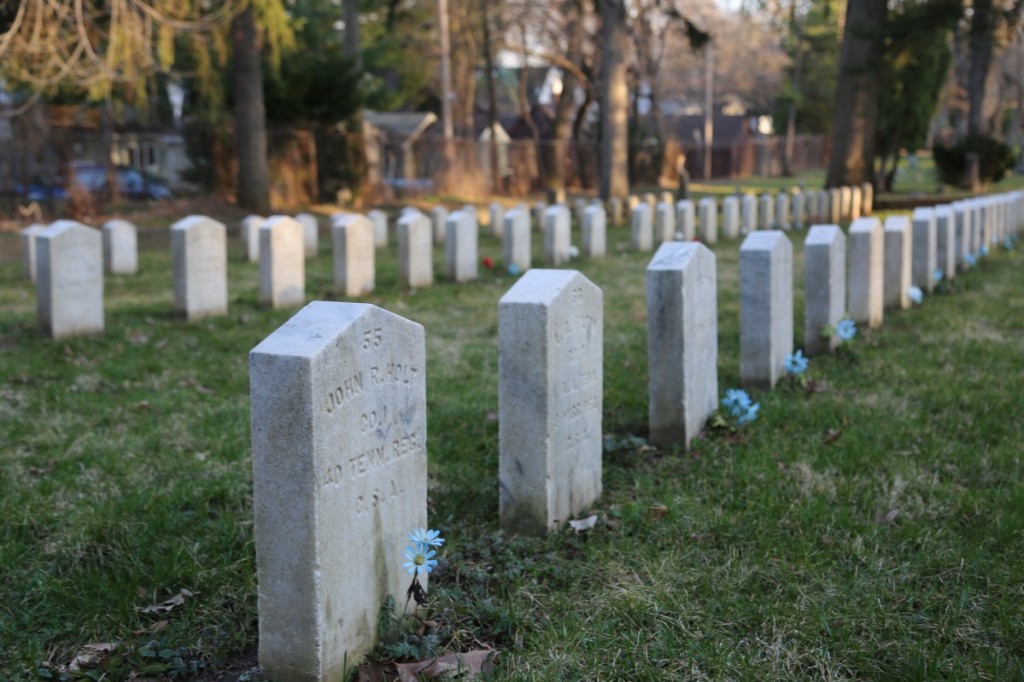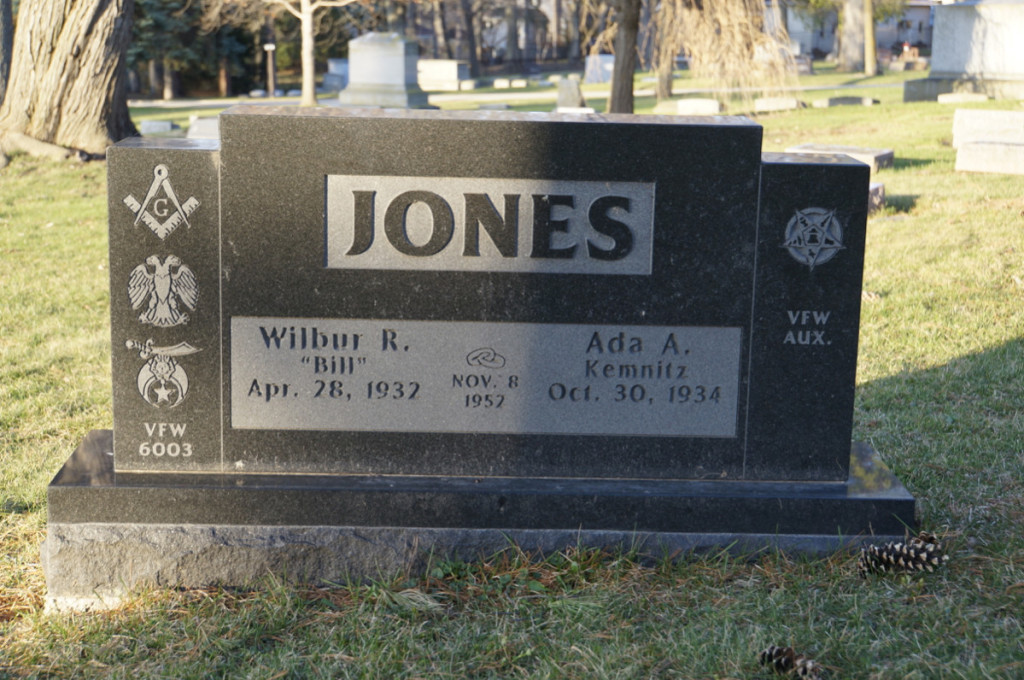Collective
Forest Hill is full of graves that express group or collective identity. These groups are, for the most part, formed by organizations that require time, commitment, and loyalty from their members in exchange for the support and kinship of a family that is chosen rather than born to. The symbols that denote this kind of identity have the uncanny power to speak quite eloquently to any cemetery visitors who identify with the same group. They make it possible for the deceased to evoke a wealth of shared knowledge, experience, and affinities with living members of the collective.
Military
There are few forms of collective identity stronger than that of the military, and there are three
military sections in Forest Hill that illustrate this identity. For civilians who are unfamiliar with military life, the ‘Soldiers Rest’ sections of a cemetery might not have the same attraction as the ornate variety of stones found in other parts of the cemetery. Particularly in the romantic landscape of Forest Hill, the strictly spaced and gridded stones of the soldiers’ lots provide sharp contrast to the surrounding spaces of civilian interment. However, the nearly identical markers of the military sections of Forest Hill demonstrate a defining feature of military life. The U.S. Department of Veteran Affairs manages and provides the guidelines for veteran gravestones, ensuring the continued uniform discipline that characterize soldier identity even in death.
Union Rest
During the Civil War Madison’s Camp Randall served as a training facility and hospital for Union soldiers. Most of the 240 Union soldiers buried in the Soldier’s lot near the entrance of Forest Hill died while in the hospital. The Soldiers Lot also serves as the final resting place for some veterans of the of the Spanish-American War and World War I, in addition to 8 children who died in the orphanage dedicated to children of Union soldiers.
Soldiers Rest
Soldiers Rest is the only military lot in the cemetery that illustrates the slow evolution of burial practice for military service men and women. This lot, which continues to provide space for all post-Civil War veterans, also provides space for their spouses. The inscriptions for veteran spouses express their own sub-section of group identity.
Most of the spouses’ stones are identical to those of their husbands (or less frequently wives), with the exception that the inscriptions under their names read simply, “wife/husband of” followed by their spouses name instead of the rank and unit identification inscribed on the stone of her or his partner.
At least in terms of stone memorials, the identity of veteran spouses has been almost entirely expressed through their relationship to their partner. Not until fairly recently has the soldiers lot in Forest Hill revealed some exceptions to this pattern with some more personal variation of stones for spouses. The 1995 stone of Evelyn L. Zimmerman Jewell, for example, replaces the customary cross symbol with a rose, and specifies her as “Beloved wife of William R.”

The graves of William Jewell and his “Beloved Wife” Evelyn in Soldiers Rest. Photo by Joanna Wilson.
CONFEDERATE REST
One of the most surprising and poignant expressions of group identity can be found in Forest Hill’s plot of confederate graves that occupy the northernmost confederate cemetery in the country. During the Civil War, Camp Randall briefly operated as a prison camp and hospital for confederate soldiers who surrendered to the Union Army after defeat at the Battle of Island No. 10 in the Spring of 1862. Camp Randall was unequipped to house and care for the 1,400 confederate prisoners placed in their charge, and all prisoners were transferred by the beginning of summer after the battle. The 140 confederate soldiers buried at Forest Hill died of wounds or illness at Camp Randall before the prison transfer took place.
Though the confederate soldiers were buried here in Forest Hill i in 1862, the original plot would have looked very different. Shortly after the Civil War ended, Alice Waterman, a sympathetic Madison citizen with southern roots, became the self-appointed custodian of Confederates Rest. Waterman procured confederate markers for each of the men, and continued to tend the plot until her own death in 1897, when she joined “her boys” as the only civilian laid to rest in in the enclosed confederate plot.

A memorial plaque in front of Confederate Rest briefly narrates the history of the lot and Alice Waterman’s dedication to the memories of soldiers she never knew. Photo by Joanna Wilson.
The uniform design and minimal ornament that characterizes most veteran gravestones is emphasized by the noticeable absence of even birth and death dates. It is the lack of information that is most telling of the men buried in this lot. Each grave is simply inscribed: beneath the symbol of the Southern Cross, with a number, followed by the name and state regiment affiliations of the deceased. A plaque at the entrance of Confederate Rest explains the missing biographic data.
The birthdates were unknown for almost all of the 140 men interred in Confederate rest, and all 140 shared the same year of death in 1862. The identically incomplete biographies of these confederate soldiers speak with unique poignancy to their last days on earth. They each died far from away from family and loved ones, far from anyone who knew them outside of the distinctly traumatic context of an ugly war.
Fraternal Organizations
Dispersed throughout Forest Hill you will find an array of symbols that signify membership of various secret societies and fraternal orders. The significance of these mysterious designs may be lost to an uninitiated cemetery visitor, but they hold a great deal of meaning for the people who recognize them as symbols of shared community.


Back to Top | Symbols Main Page | Individual | Sacred | Inherited









